Himachal
History
When Gorkhas Ruled
Himachal Pradesh
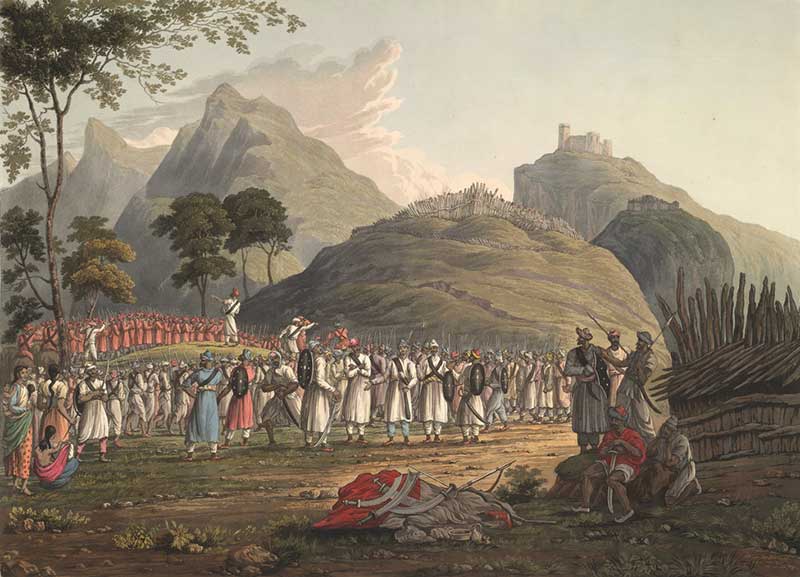
The rulers of Himachal hill states had asked Gorkha army General Amar Singh Thapa to fight their wars. It was an invitation, he didn’t turn down. He grabbed it…
When Gorkha General Amar Singh Thapa Ruled Himachal Pradesh from Arki Fort | Video

Not so long ago, Nepal ruled the hills of the present-day Himachal Pradesh and Uttarakhand. The Gorkha kingdom of Nepal had won Kumaon hills by 1791 and annexed Garhwal by 1804, however, its armies invaded Himachal Pradesh on an invitation. Actually, two invitations.
The first was from the ousted Raja of Sirmaur — Karm Prakash — and the second from the Raja of Bilaspur (then called Kahlur state) — Mahan Chand.
Gorkha army enters Sirmaur
Karm Prakash became the Raja of Sirmaur following the death of his elder brother in a battle in 1795-96. He inherited the throne by chance as his both elder brothers had died without any heir.
But his inept rule did not last long and soon his half-cousin Kishan Singh, a popular military leader, rebelled and seized Naraingarh (in the present-day Panchkula district of Haryana) in the plains. Resentment against Karm Prakash further grew after he also lost control of Pinjore (presently in the Panchkula district of Haryana) in the plains.
A garrison in the nearby lowland valley of Dehra across Yamuna river was also evacuated, prompting Gorkha armies to capture the area by 1803-04. He also lost control of Bara Thakurai (the twelve principalities which later became part of Simla Hill States under British rule).
Around the same time, Karm Prakash must have felt a jolt when news reached him in Kalsi town that a rumour had been spread about his death and that in his absence his younger brother Ratn Singh was crowned in the capital town of Nahan.
The ousted Raja sought the help of the Gorkha army across the Yamuna river and approached Amar Singh Thapa, the commander of the Gorkha army and the ruler of Kumaon and Garhwal at that time. For Amar Singh Thapa, this opportunity to expand his territory couldn’t have come at a better time. The Gorkha kingdom had already captured Kumaon and Garhwal and next was Sirmaur’s turn.
So between 1804 and 1805, Amar Singh Thapa with his army crossed the Yamuna river to enter Paonta Sahib, reached Nahan and after defeating the rebels, reinstated Karm Prakash. However, Karm Prakash must have proven to be a puppet Raja as Amar Singh Thapa before leaving kept a force in Sirmaur to oversee the affairs of the state.
Amar Singh Thapa’s next target was to win Kangra for which he had already received an invitation. So after capturing Sirmaur, Amar Singh Thapa led his army towards Kangra.
Attack on Kangra

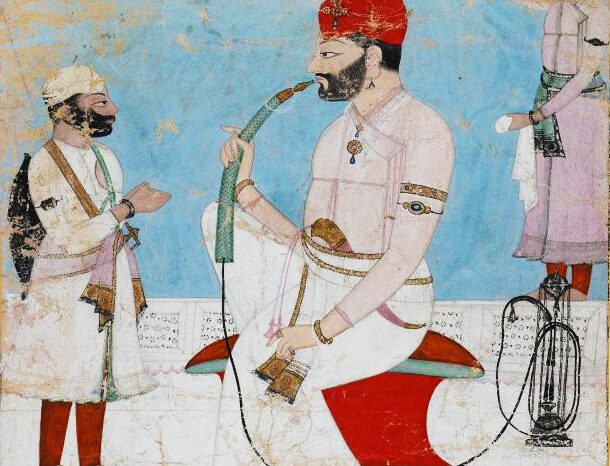

It was the fear of Sansar Chand, the Raja of Kangra and scion of Katoch dynasty, that smaller hill states formed an alliance against him and turned to Gorkhas. Sansar Chand had become the Raja of Kangra in around 1785 to 1787 (various historic accounts differ on the exact year) during the last days of the Mughal empire.
An ambitious king, Sansar Chand had his own expansion plans. John Hutchison writes in the History of the Punjab Hill States that “with the possession of the Kangra fort and supreme power in the hills, Sansar Chand was able to prosecute his ambitious plans” and began ruling a somewhat awestruck hill states.
“Supported by a large army, Sansar Chand overawed the hill chiefs, made them tributary and compelled them to attend his court,” writes Hutchison. In around 1803, Sansar Chand tried to take over the areas of Hoshiarpur in Punjab also but did not succeed and after abandoning his expansion plans in the plains, he attacked and invaded part of the Bilaspur state in 1805. Unable to bear the insult, the Raja of Bilaspur after forming an alliance with other local chiefs, invited Amar Singh Thapa to invade Kangra.
Thapa must have felt more than happy to respond and according to Hutchison, he crossed the Satluj river in Bilaspur in 1805, for an ensuing battle with Sansar Chand.
In the battles, first of which was fought in Mahal Mori in 1806, Gorkha army defeated Sansar Chand. Gorkha army then advanced and reached Nadaun and liberated the Raja of Mandi who had been held prisoner there for 12 years.
As Gorkha army advanced, Sansar Chand with his family took refuse in the Kangra fort where the supply was enough to last 12 years. Gorkha army could not capture the fort and laid siege to it and “plundered the surrounding areas for next four years.”
After holding on to the Kangra fort for three years, Sansar Chand in May of 1809 sent his brother to Maharaja Ranjit Singh seeking help to end the siege. According to Nepaul War Papers, Amar Singh Thapa had requested the help of British army and wrote to Major General David Ochterlony but his request was declined. Singh helped Sansar Chand and after defeating the Gorkha army freed him from the fort.
But Sansar Chand paid a heavy price for bringing in Ranjit Singh. He lost all his territories to Singh.
King of the hills
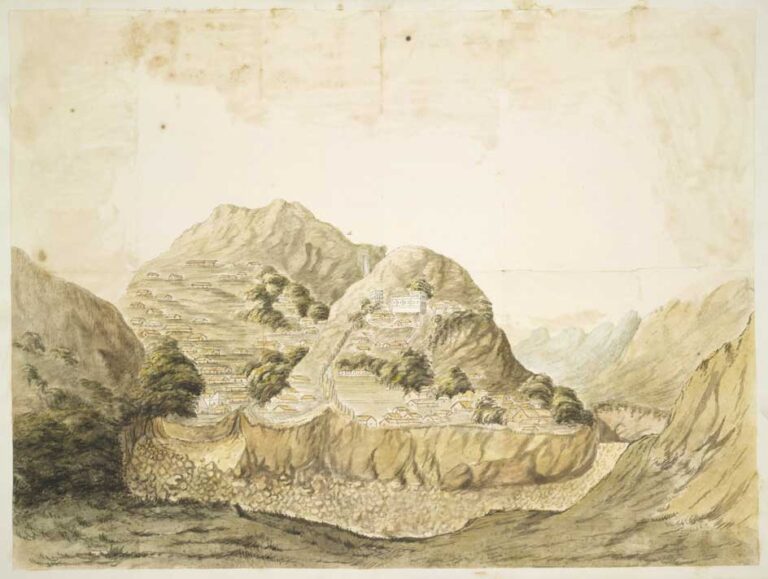
After the defeat at the hands of Ranjit Singh, Gorkhas retreated, only to spread out to other parts of the hills of the present-day Himachal Pradesh.
In the following years from 1809 to 1813, the Gorkha army led by Amar Singh Thapa took complete control of hill states including Bushahr, Nalagarh (then called Hindur), Bara Thakurai or Simla hill states, Bilaspur and Sirmaur.
Some of these states bent the knees even without a fight. While Bilaspur was already occupied, in Sirmaur, ceremonial king Karm Prakash fled with his family on hearing the news about the retreating Gorkha army. Karm Prakash knew he would have to face the consequences of not helping the Gorkha army in its war against Kangra. This was for the last time Karm Prakash would flee his state.
After fleeing Nahan, he lived in Munny Majra (Present-day Manimajra in Chandigarh) for a while and the Sirmaur state was ruled by Amar Singh Thapa’s son Ranjor Singh. There were 18 hill Rajas or chiefs who were either expelled or served Amar Singh Thapa at that time and became a revenue source for the Gorkha army.
Amar Singh Thapa made Arki (in the present day Solan district) his capital and for some time stayed in Rampur after defeating Bushahr but later returned to Arki.

Gorkhas dare the British
In 1813, Amar Singh Thapa occupied four villages in the plains, which formerly came under the state of Nalagarh. For few years, at least since 1810, Britishers had been asking Thapa not to invade areas under their protection in the plains.
From the British point of view, the Gorkha army was free to wage wars, raid or capture the hills but not touch the plains.
So when Gorkha army captured these four villages in the plains, Britishers considered it an act of encroachment. In letters exchanged between David Ochterlony, a political agent in Ludhiana at that time and who led the war against Gorkhas, and Gorkha army commander Amar Singh Thapa, in 1810, Ochterlony warned Thapa against invading areas including Naraingarh, Pinjore, Palasi etc in the plains which formerly belonged to Nalagarh and Sirmaur states.
Thapa in his letters written back to Ochterlony had insisted that these areas continued belonging to Nalagarh and Sirmaur states and thus he had a right to capture them.
Golar Rani seeks British help
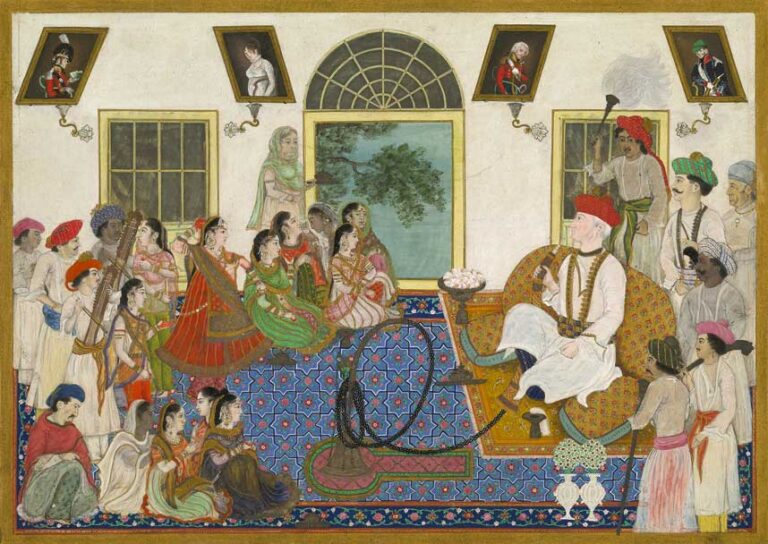
In the meantime, Goler Rani, the second wife of Karm Prakash, the exiled Raja of Sirmaur, and who was well versed in regional politics, had contacted Ochterlony and asked for his intervention in removing Gorkhas from Sirmaur.
Arik Moran writes in Kinship and Polity on the Himalayan Borderland that in exile Goler Rani had taken charge as Karm Prakash showed symptoms of syphilis and stopped appearing in public. “Sirmauri Raja exhibited increasingly visible symptoms of syphilis that barred him from public appearances to the point of passing royal seal to his wife.”
In her communications with Ochterlony, the Goler Rani, “a wise and courageous woman, made a favourable impression,” and after the war, her young son Fatheh Singh was crowned as the Raja of Sirmaur. The Britishers were content to replace “imbecile” Karm Prakash with his son.
Anglo-Gorkha war
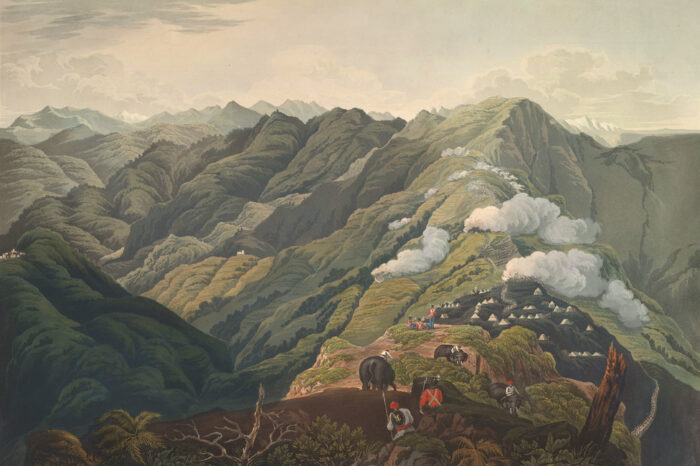
The capture of four villages by Amar Singh Thapa acted as a trigger for Britishers to declare a war. But the real aim of the war was to expel the Gorkha army from the hills and take control of the trade route to Tibet.
Britishers declared the war against Gorkha army in November 1, 1814. The British army with superior fire power had an upper hand in the war but the Gorkha army fought back bravely. Moreover, British army was helped by most of the local chiefs expelled by the Gorkhas and were promised that in return they would be restored after the war.
With David Ochterlony leading the troops, British army soon defeated Gorkhas and seized most of the hill territories, narrowing the action to Jaithak fort in Nahan and Malaun fort in Solan.
The Jaithak fort in Nahan was held by Ranjor Singh and the Malaun fort by his father Amar Singh Thapa. Major General Martindale occupied Nahan by December 24, 1814 and immediately led the first attack on Jaithak fort. The battle resulted in a humiliating defeat to Martindale costing him 300 soldiers of the British army, who died while trying to capture the fort.

In the battle of Malaun, British army led by David Ochterlony cut the supply lines to the fort from Gorkha ally Bilaspur. Ochterlony managed to establish the British forces near the Malaun fort, weakening in the process Amar Singh Thapa’s strategic position. It was here that the old warrior Bhakti Thapa died in one of the assaults he had led against Ochterlony’s troops. He was 74 when he fought his last battle and died in the field.
The British superiority in numbers and firepower forced both Amar Singh and his son Ranjor Singh to surrender and by May, 1815, both the Malaun and Jaithak forts had fallen.
And as per the agreement signed between Amar Singh Thapa and David Ochterlony, both father and son were allowed to leave the forts with their troops and arms.
So much impressed were the British officers by the courage and bravery shown by Gorkha soldiers in the war that David Ochterlony proposed that Gorkha soldiers, who wanted, could join the British army.
Thus was formed the first Gorkha battalion also known at that time the Nasiri battalion. As far as the hill Rajas were concerned, most of them were restored to their states, however, with British officers ruling over them. Some princely states like Baghat, which had not helped Britishers in the war against Gorkhas and whose ruler Mahinder Rana’s daughter was married to Amar Singh Thapa, had to face the consequences. Parts of Baghat and Keonthal states were sold to Patiala state for being “unfriendly.”
A formal treaty (Treaty of Sagauli) ending the war was signed on March 4, 1816. The Gorkha army was made to return the banks of Gogra (Ghaghara) river and beyond, from where they had come invading.
References
Papers Respecting the Nepaul War (1824)
Gazetteer of the Kangra district (1883)
Records of the Ludhiana Agency (1911)
History of the Panjab Hill States by J Hutchison and J Vogel (1933)
Imperial Gorkha: An Account of Gorkha Rule in Kumaon (1791-1815) by Mahesh C Regmi (1999)
Kingship and Polity on the Himalayan Borderland by Arik Moran (2019)





Remarkable research of the geopolitical affairs and the impact of Gorkhas in the erstwhile hill states of present Himachal. Need more research on it.